When I first saw the outflow of the Wheeler River, where trophy Arctic grayling were rumored to stage and wait for Russell Lake’s slow-moving current to deliver all sorts of buggy morsels right to them, I was pretty sure it was going to be some tough fishing.
It’s big water, and there’s lots of it. And the boreal north’s black spruce and birch forests hug the bank, making backcasts tough. If we were going to enjoy catching 20-inch grayling, we were going to work for it.
Two of our group crowded into one of the more open spots along the river, and within a few minutes, each had brought of a couple of small-ish grayling to hand. But 12-inch fish in the wilds of northern Saskatchewan weren’t going to cut it. I’d come a long way. I wasn’t going to settle for grayling I could catch in a stocked lake an hour from home.
I wanted the big one.
So I braved the heavy current well upstream of the guys fishing below me, and it wasn’t as bad as I thought it would be. The Canadian Shield’s bedrock is rough and young, exposed due to the graces of the last Ice Age’s receding glaciers. Its lakes and rivers haven’t had eons to wear away at it and smooth its rough edges. So the footing was solid, and while bearing the full force of the lake as it picked up steam on its way to a gnarly set of rapids wasn’t exactly easy, it was doable and it gave me access to the deeper side of the river where I guessed the bigger fish were holding.
I tied on a high-floating foam beetle—my experience with grayling dictates that most of these wilderness fish don’t see a lot of flies. They aren’t leader-shy. Hell, they’re not shy at all. I figured anything that floated by that looked buggy enough would draw a strike.
And I was immediately rewarded with a blast from a decent fish—maybe 15 inches that erupted from the water and stressed my glass 4-weight when it turned against the current and used that gorgeous sail of a dorsal fin to its advantage.
After two more hits and misses, the fish stopped attacking the beetle. I switched it up. A Royal Coachman dosed with floatant got a couple more hits from footlong fish, but I couldn’t connect. After a fashion, it, too stopped working.
I was puzzled. By grayling.
Where’s the beef? The pictures on the lodge’s website showed anglers posing with beastly grayling. I wasn’t going to be content with a 15-inch fish, as pretty as it was.
So I got creative. And let this be the lesson. All fish, even rarely targeted grayling in the far north, can grow weary of the same approach. Within 200 feet of each other, four of us were casting dry flies over these fish. That’s enough to make even these naive native salmonids of the north wary of what’s coming next.
So I dug out my attractor box and dosed a size 10 Royal Wulff Stimulator with grease, and cast it into the current. Too big? Yes, for the smaller fish. But not for the 20-inchers that I was certain lay in wait. And seconds later, I was proved right.
As the fat bug floated happily down the current seam, a truly big grayling busted from the water, porpoised and cartwheeled for a good five minutes and finally came to hand.
“That’s more like it,” I whispered to myself as I unbuttoned the 18-inch fish. I dusted the fly to dry it out, and made a second cast. It floated along the current seam with no response, and just as the drag started to skate the fly at the end of its drift, another beast nailed it. This one was simply huge—this was the 20-inch grayling I’d been waiting for.
I dusted the fly again, ran it through the gauntlet and took another behemoth on the skate. This was getting fun.
More dust. Another drift. The skate. Nothing. I began to strip the fly back to me, and it dipped just under the surface. On the third strip, another massive grayling busted the fly. This one put on a tarpon-like arial display before coming unhooked as I reached for it. It was the biggest of the bunch.
I made a few more casts with the Wulff, but they had grown tired of it. So I switched to a simple olive Stimmy, and let the whole process unfold again. First the dry drift, then the skate on the swing and finally the the strip.
It’s a testament to the versatility of solid attractor patterns, and to the finicky nature of fish. I’ve had similar experiences with cutthroats and brown trout in my local home river—if you can fish a fly several different ways, you can catch more fish.
Now, some flies lend themselves to being fished using different methods. I’ve caught trout using soft-hackles on the dry drift, and then again on the swing. Stimulators and Wulffs, while not meant to imitate any one bug, offer the flexibility to be fished dry, on the skate and then retrieved like a streamer.
When fish are active and not dialed in on any one insect, going with flies that can be fished using several methods can increase your catch rate and, frankly, make your day more enjoyable.
Think big attractors are just for naive backcountry trout? Think again. They can be best flies in your box on any given day.
Here are some examples of multi-use flies—and the list may be longer than you expect.
Attractors and Stimulators
As mentioned above, these strike-inducers can be fished dead-drifted, skated, fished on the swing or stripped.
Foam Hoppers and Other Terrestrials
Another big floating bug, these flies work well drifted and on the swing.
Soft Hackles
One of the most deadly types of fly in any fly box, soft hackles can be greased with floatant and dead drifted, dritfted wet as an emerger, swung through the current and even stripped back on a twitched or “mini-strip” retrieve.
Wooly Buggers and other streamers
Perhaps the true no-wrong-way-to-fish-it flies, wooly buggers, leeches and a myriad of other streamer patterns can be fished an endless number of ways—dead-drifted, swung or stripped using a variety of stripping techniques like these and these.
Nymphs
Most nymphs are dead-drifted through fishy runs, but they often work on the swing as they move closer to the surface or “emerge,” particularly if they’re fished under an indicator as a dropper. As the attractor or indicator reaches the end of its drift, let the nymph come to the surface before you pick up your line and recast. You might be surprised.
Some attractor nymphs, like the Prince or the Copper John, even work on a short retrieve, particularly through slower water.
The overarching message? When fish are active, fish flies that can be presented in a variety of different ways—which is an easy task given how many types of flies fit the bill. Being flexible and giving active fish a variety of options will increase your success.




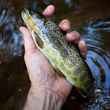









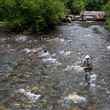
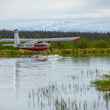



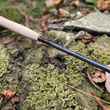





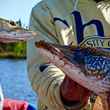



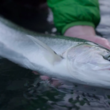

Comments